- Bernard Preston homepage
- Brain foods
- Magnesium From Corn and Beans
Magnesium from corn and beans
Magnesium from corn and beans is an important element; most of us are getting no more than half of what is desperately needed by the body. Other good sources are dark-green leafy vegetables like spinach; nuts and seeds too[3].
Magnesium is especially needed to normalise the contraction of the muscles lining our arteries; without sufficient of the element we will most likely need blood-pressure medication.
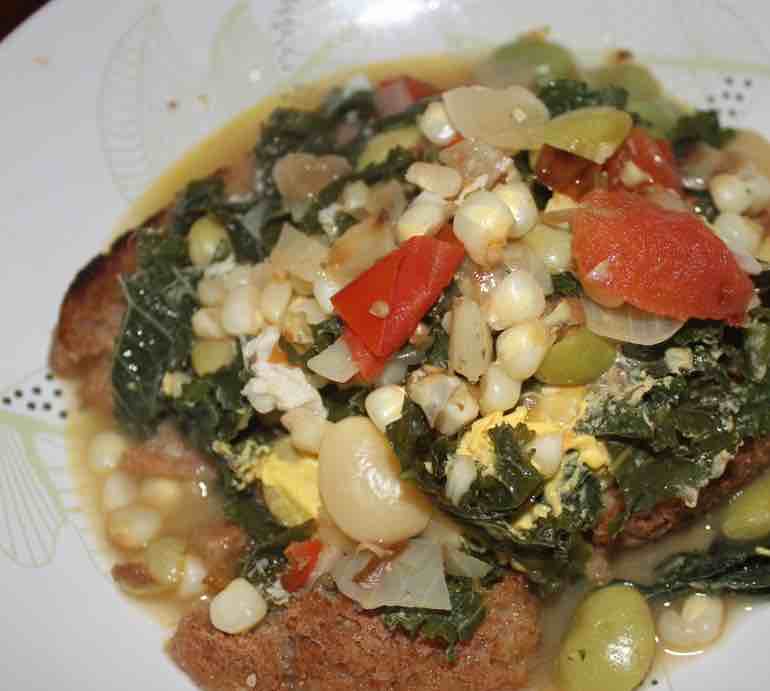
Corn
Whole grains are a rich source of magnesium. Once refined of course they are hopeless. Corn on the cob is one of the easiest ways of getting the mineral in the summertime.
I'm uncertain of corn from cans; we in the main enjoy foods that are in season. There are many warnings that the plastic lining is carcinogenic, so we avoid them in any case. When you have seen the amount of suffering from tumours that every doctor has witnessed, one becomes more focused on what to eat and lifestyle in general; it is no fun way to die.
- There is roughly 3/4 cup of corn on one average-sized cob.
- That's about 3/4 x 54 mg of magnesium.
- That will supply 40 mg or 10% of the recommended dietary allowance.
We don't believe in counting calories and calculating the need for every vitamin and mineral; it would totally ruin the love of food. So we work on broad principles; just regularly get more magnesium from corn and beans.
I can assure you that if you enjoy the foods recommended at this site, you will be getting plenty of magnesium and all the other minerals that your body needs; whole grains, legumes and dark-green leafy vegetables supply massive amounts of nutrients.
Beans
Personally I'm not crazy about dried beans. I would eat them out of necessity; but we prefer to grow and enjoy our legumes whilst they are still young, green and tender.
Just for the record, 100g of dried kidney beans contains 140 milligrams of magnesium.
Lima beans are our favourite and very easy to grow; they continue producing for months. According to Healthline one cup weighs 170 grams and contains about a third of your daily requirement of magnesium[1].
Mature broad bean seeds contain even more magnesium; 192mg in 100 grams according to Diet and Fitness today. They are often called favas.
Freezing broad beans is a labour of love, particularly for those suffering from Parkinson's disease; then patients can also get sufficient dopamine as well as the magnesium.
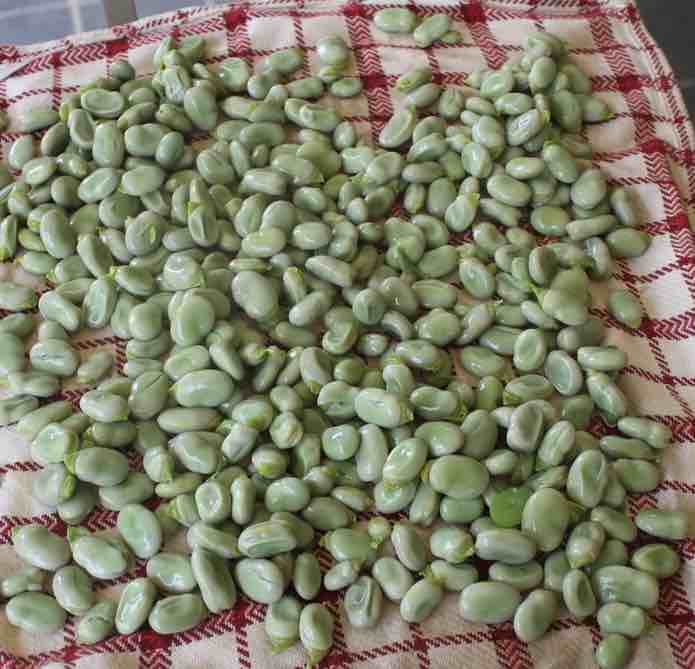 Blanched broad beans ready for freezing.
Blanched broad beans ready for freezing.The whole debate about anti-nutrients doesn't phase me but if you are concerned, green beans have a great deal less than those that are dried; perhaps that is why they are nicer.
Corn and beans have been a staple since time immemorial; the magnesium is just one reason. Unrefined like this they have a very low glycemic-index; they have little effect on your blood glucose. Together they also give a better balance of the essential amino acids we all need; children and the elderly need extra protein[6].
Are beans very starchy is a question to face.
This page on the nutritional value of green beans is perhaps one of the most important at our site.
In fact they help reduce fasting blood glucose and lower the risk of getting type-2 diabetes[2].
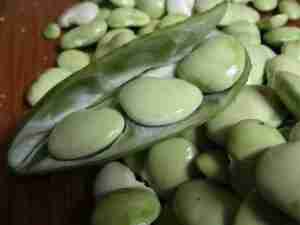 Lima beans
Lima beansIngredients
- 1 ear of corn, cooked, retain the water
- 1 cup of freshly-shelled lima beans
- 1 cup of washed and chopped spinach
- Chili and garlic
- Salt and pepper to taste
- 2 eggs
- Optional: 1 slice of whole-grain toast*
Go for it
- Fry 1/4 onion in butter.
- Cut the kernels off the cob and add.
- Add the green lima beans.
- A slither of chili and a few cloves of garlic will add to your enjoyment.
- Add the water the corn was boiled in.
- Add the chopped spinach and simmer for a few minutes.
- Poach an egg on the spinach, corn and beans.
* This corn and beans dish has more than enough starch; but if you are not obese you could enjoy it on a slice of whole-grain toast to mop up the juices rich in minerals like magnesium.
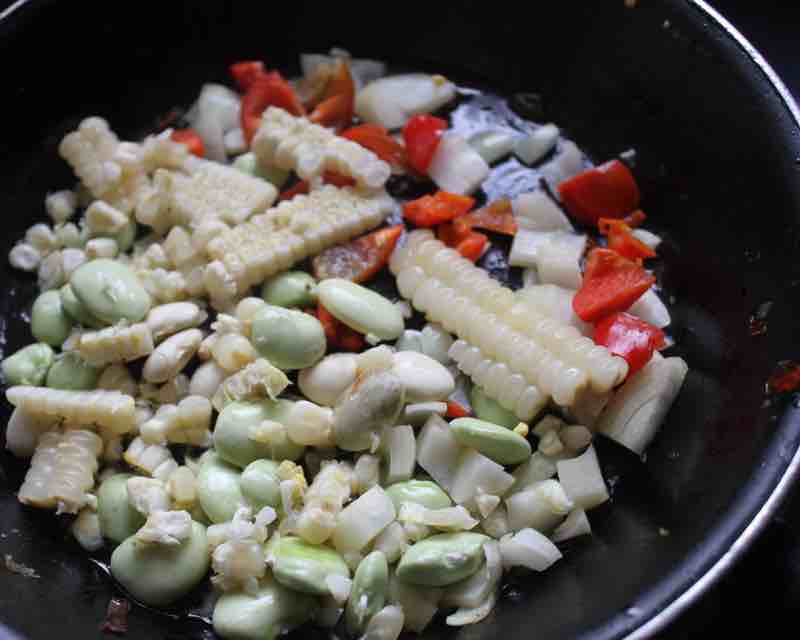
We can become utterly neurotic worrying about whether one has had enough of this or that mineral; or the great multitude of important vitamins and phytonutrients.
Simply aim for ten or more coloured foods daily, plenty of legumes and unrefined grains; you'll be home and dry. Corn incidentally is also a good source of lutein and zeaxanthin; a deficiency of either would cause macular-degeneration[5].
Join the flexitarians; enjoy small amounts of meat perhaps once or twice a week. And we're not the slightest bit fearful of unrefined carbs. If you are diabetic or obese then you will have to limit even the good starches for a period.
Rough estimate of the magnesium in one helping
Food item
- 1/2 cob of corn
- 1/2 cup lima beans
- 1/2 cup spinach
- 1/2 slice wholewheat toast
Magnesium
- 20mg
- 60mg
- 80mg
- 23mg
Total = 183mg (half of the RDA)
Magnesium from corn and beans
Magnesium from corn and beans is a mineral needed for literally hundreds of biochemical reactions in the body; one simply cannot be healthy if we are not getting around 400 mg per day. Most folk are having no more than half of that.
The dish made from corn and lima beans is often called succotash.
Composting
Most of the soil in agricultural lands today is deficient in magnesium and a host of other nutrients; so many folk feel they have to take supplements. Only the research shows that from your food minerals are far more readily available. Being followers of Hippocrates, the father of the modern healing sciences, we instead rely on these easy composting tips.
Organic gardeners have far less worries about subjects like magnesium from corn and beans; and all the other important nutrients our bodies must have daily. It's just one of the reasons why there are so many vigorous elderly people in these five areas of the world; blue zone longevity. There are no old-age homes.
Do you want to live to a healthy hundred with your marbles and joints intact? Join the ranks of organic gardeners. It's fun in any case and the food tastes so much better.
Raised garden beds are hard work to build but then become a source of minerals like magnesium for ten years or more; it all starts with digging a pit about 15 cm deep.
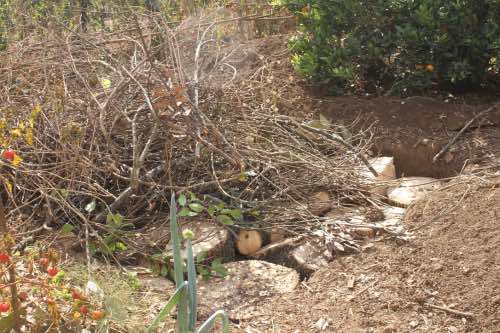 A sunken pit is the start of a raised garden bed
A sunken pit is the start of a raised garden bedWhen browsing use right click and "Open Link in New Tab" or you may get a bad gateway signal.
What food is highest in magnesium?
Choosing one food that is highest in magnesium is not smart; it's best to enjoy a broad spectrum of nutrients rich in the mineral. But if forced to nominate a particular dish I would probably plump for a great favourite; guacamole with pumpkin seeds.
Newsletter
Our newsletter is entitled "create a cyan zone" at your home, preserving both yourself and Mother Earth for future generations; and the family too, of course. We promise not to spam you with daily emails promoting various products. You may get an occasional nudge to buy one of my books.
Here are the back issues.
- Lifestyle and ideal body weight
- What are ultra-processed foods?
- Investing in long-term health
- Diseases from plastic exposure
- Intensive lifestyle management for obesity has limited value
- A world largely devoid of Parkinson's Disease
- The impact of friendly bacteria in the tum on the prevention of cancer
- There's a hole in the bucket
- Everyone is talking about weight loss drugs
- Pull the sweet tooth
- If you suffer from heartburn plant a susu
- Refined maize meal and stunting
- Should agriculture and industry get priority for water and electricity?
- Nature is calling
- Mill your own flour
- Bake your own sourdough bread
- Microplastics from our water
- Alternative types of water storage
- Wear your clothes out
- Comfort foods
- Create a bee-friendly environment
- Go to bed slightly hungry
- Keep bees
- Blue zone folk are religious
- Reduce plastic waste
- Family is important
- What can go in compost?
- Grow broad beans for longevity
- Harvest and store sunshine
- Blue zone exercise
- Harvest and store your rainwater
- Create a cyan zone at your home
Did you find this page interesting? How about forwarding it to a friendly book or food junkie? Better still, a social media tick would help.
- Bernard Preston homepage
- Brain foods
- Magnesium From Corn and Beans
Address:
56 Groenekloof Rd,
Hilton, KZN
South Africa
Website:
https://www.bernard-preston.com